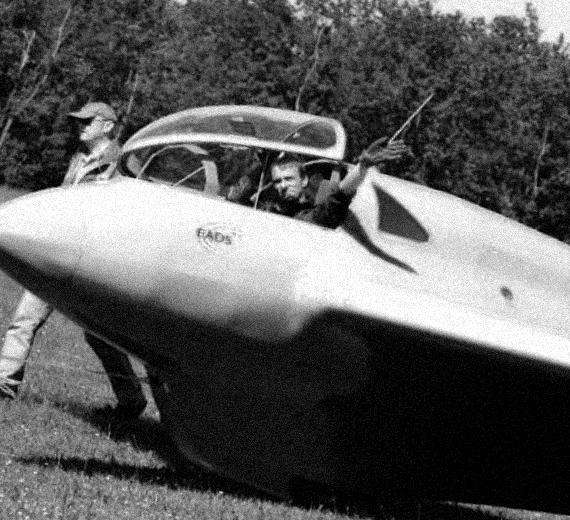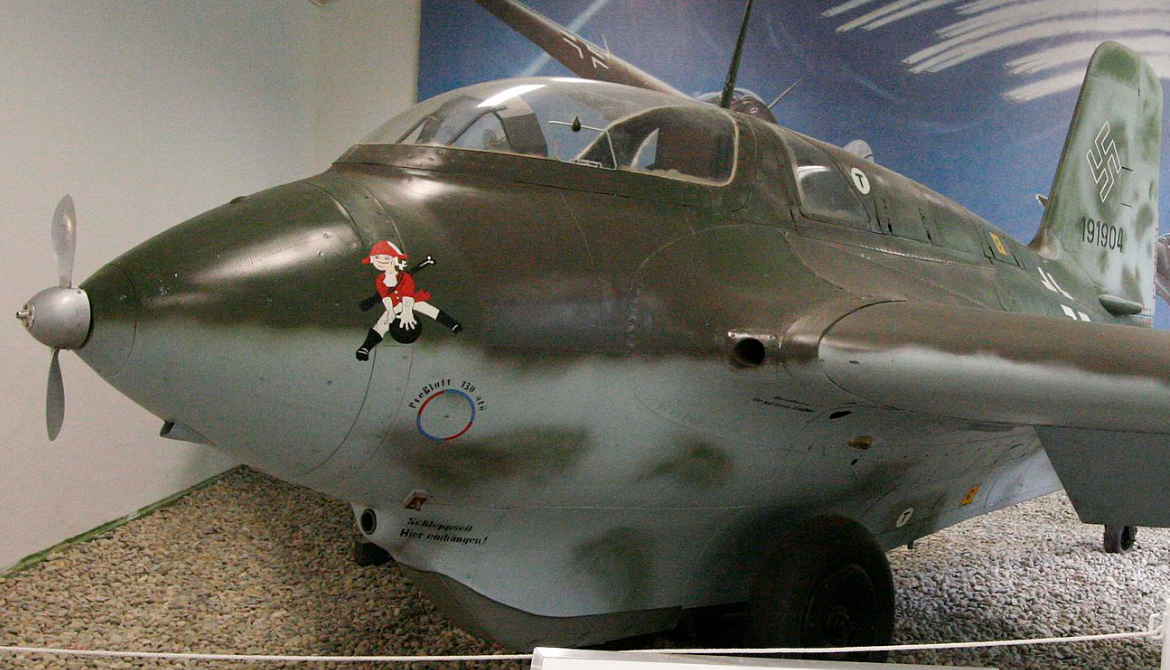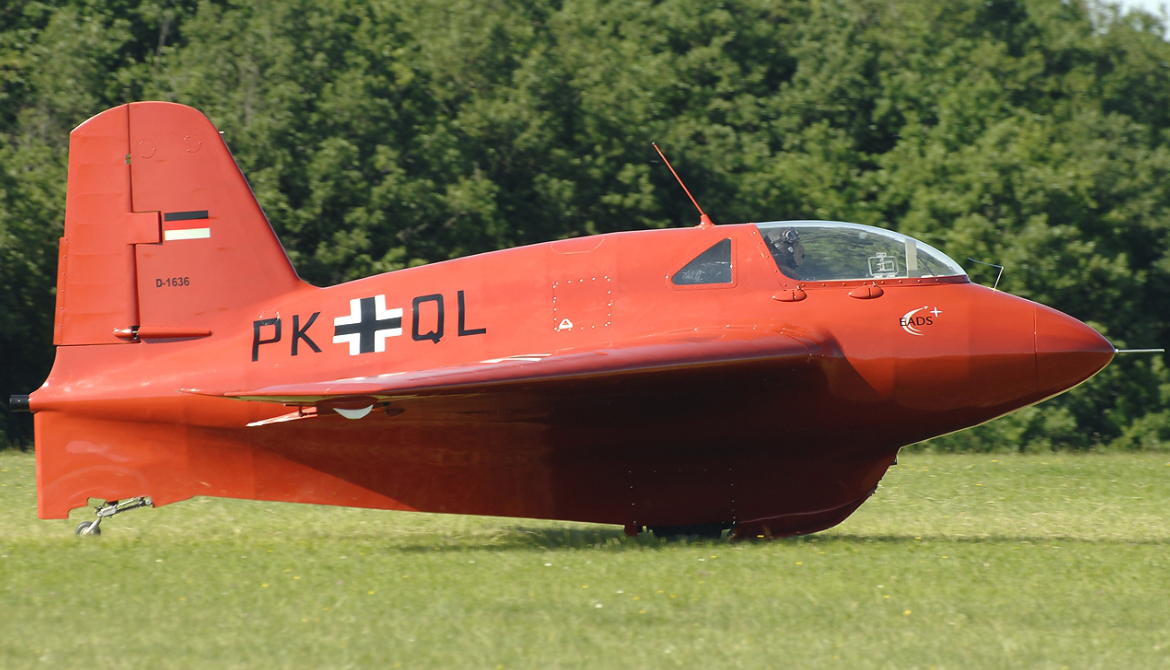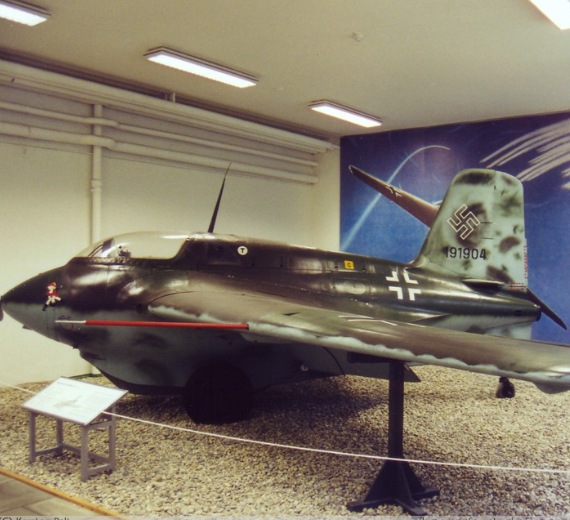.
History Bayerische Flugzeugwerke (BFW)
Messerschmitt AG
Messerschnitt
Me-163 Komet
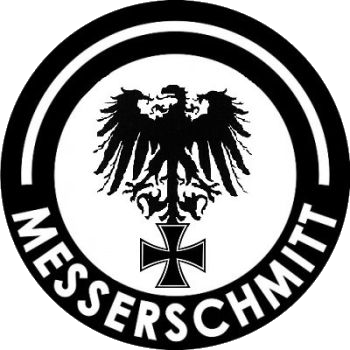
The Messerschmitt Me 163 Komet is a rocket-powered interceptor aircraft primarily designed and produced by the German aircraft manufacturer Messerschmitt. It is the only operational rocket-powered fighter aircraft in history as well as the first piloted aircraft of any type to exceed 1,000 kilometres per hour (620 mph) in level flight.
During early July 1944, German test pilot Heini Dittmar reached 1,130 km/h (700 mph), an unofficial flight airspeed record that remained unmatched by turbojet-powered aircraft up until 1953. That same year, the Me 163 began flying operational missions, being typically used to defend against incoming enemy bombing raids. As part of their alliance with Empire of Japan, Germany provided design schematics and a single Me 163 to the country; this led to the development of the Mitsubishi J8M. By the end of the conflict, roughly 370 Komets had been completed, most of which were being used operationally. However, some of the aircraft's shortcomings were never addressed, and the type was not as effective in combat as had been hoped.
Background
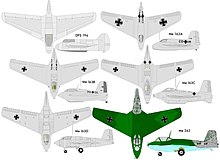

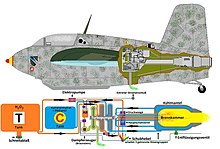
0
KmCeiling
0
KmCombat RANGE
0
Km/hAircraft Speed
0
Max Crew
Photo Gallery
Bayerische Flugzeugwerke (BFW)
Messerschmitt
Messerschnitt
Me-163 Komet


Bayerische Flugzeugwerke (BFW)
Messerschmitt
Messerschnitt Me-163 Komet
General Info
-
-
- Crew: 1
- Capacity: (Me 163S + 1)
- Length: 5.7 m (18 ft 8 in)
- Wingspan: 9.3 m (30 ft 6 in)
- Height: 2.5 m (8 ft 2 in)
-
Powerplant
-
-
- Empty weight: 1,905 kg (4,200 lb)
- Max takeoff weight: 4,309 kg (9,500 lb)
-
Fuel capacity:
- Powerplant: 1 × Hellmuth Walter Kommanditgesellschaft HWK 109-509A-2 bi-propellant liquid-fuelled rocket motor,
-
Performance
- Never exceed speed: 900 km/h (560 mph, 490 kn) at all altitudes, sea level to 12,000 m (39,000 ft)
- Flap limiting speed: 300 km/h (190 mph; 160 kn)
- Rotate speed at take-off: 280 km/h (170 mph; 150 kn)
- Best climbing speed: 700–720 km/h (430–450 mph; 380–390 kn)
- Endurance: 7.5 mins powered
- Rate of climb: 81 m/s (16,000 ft/min)
-
Time to altitude: From standing start
- 2,000 m (6,600 ft) in 1.48 min
Armament
-
Guns:
- 2 × 30 mm (1.181 in) Rheinmetall Borsig MK 108 cannon with 60 rpg (B-1a)
-
-
- or
-
-
- 2 × 20 mm (0.787 in) MG 151/20 cannon with 100 rpg (Ba-1 / B-0 pre-production aircraft)
.
Links to Youtube & Others
The first Bf 109As served in the Spanish Civil War. By September 1939, the Bf 109 had become the main fighter of the Luftwaffe, replacing the biplane fighters, and was instrumental in gaining air superiority for the Wehrmacht during the early stages of the war.
Messerschnitt
Me-163 Komet
In February 1916, the south German engineering company MAN AG and several banks purchased the unprofitable aircraft builder Otto-Flugzeugwerke,
Youtube Link
The Messerschmitt Bf 109 is a German World War II fighter aircraft that was, along with the
Focke-Wulf Fw 190

